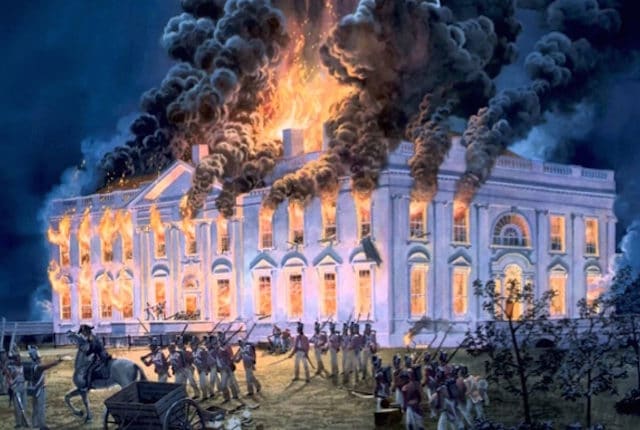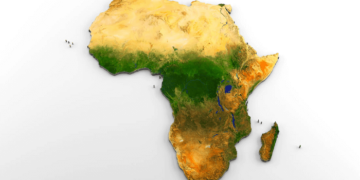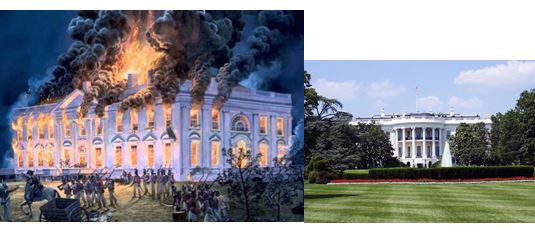8. The British Burned It Down

In June 1812, the United States, which was only 36-years-old at the time, declared war on Great Britain. There were several underlying reasons for the war, but one of them was to take over Canada, which was a British colony, and make it part of America.
Throughout the war, each side had major victories and suffered terrible losses. One of the biggest military defeats for the Americans happened on August 24, 1813, when British forces invaded Washington, D.C. In retaliation for sacking York, which is now Toronto, the President’s House was relieved of a few souvenirs before it was set ablaze. The ensuing fire nearly destroyed the building. After torching the President’s House, several other prominent buildings in Washington were burned to the ground.
Rebuilding started soon afterwards and the White House was restored to its original architectural plans. In fact, James Hoban, who oversaw the original construction, was rehired to oversee the reconstruction to make it as close to the original as possible. The reconstruction was completed by 1817, just in time for President James Monroe to move in.
After the Burning of Washington, the Americans fought back against the British and won several important victories. This led to the signing of the Treaty of Ghent on December 24, 1814. Part of the treaty was that any captured territory by either side would be returned.
What’s interesting is how this part of history is taught in schools in the United States and Canada, who have had uninterrupted peace with each other since the War of 1812. In the United States, students are taught that the War of 1812 was a war that earned the respect of the British and strengthened the nation as a whole, allowing them to expand westward. Canadian students, on the other hand, learn that the War of 1812 was the one time that the aggressive Americans tried to invade Canada and for their troubles, they got their capital and the White House burned down.





































Discussion about this post